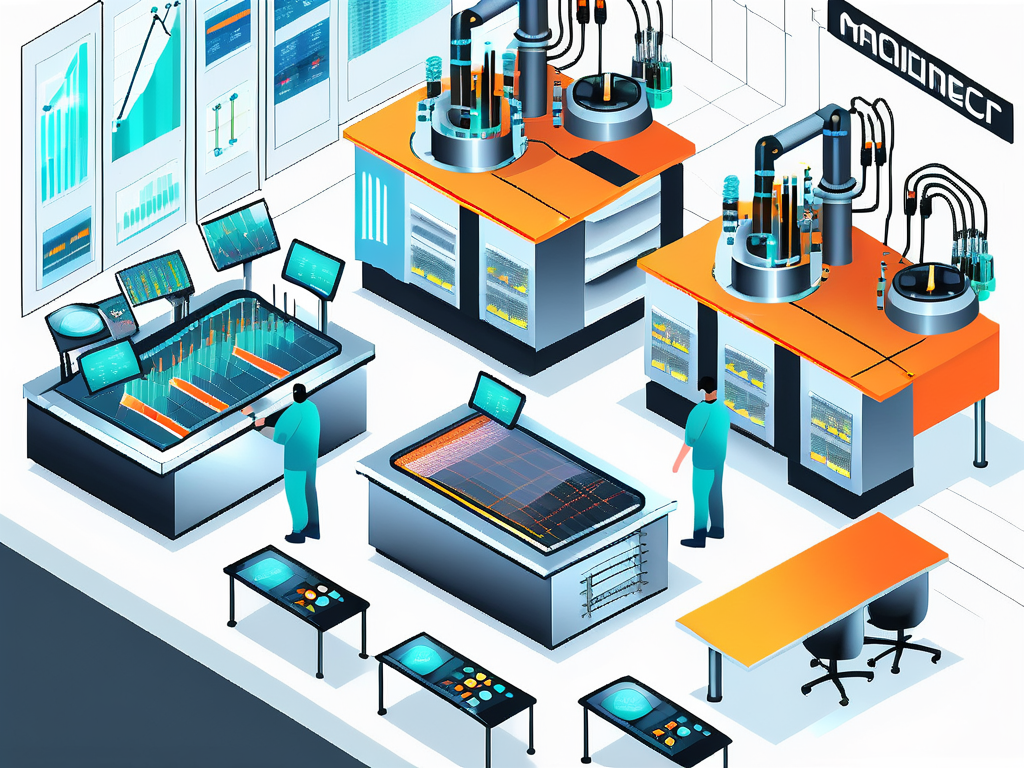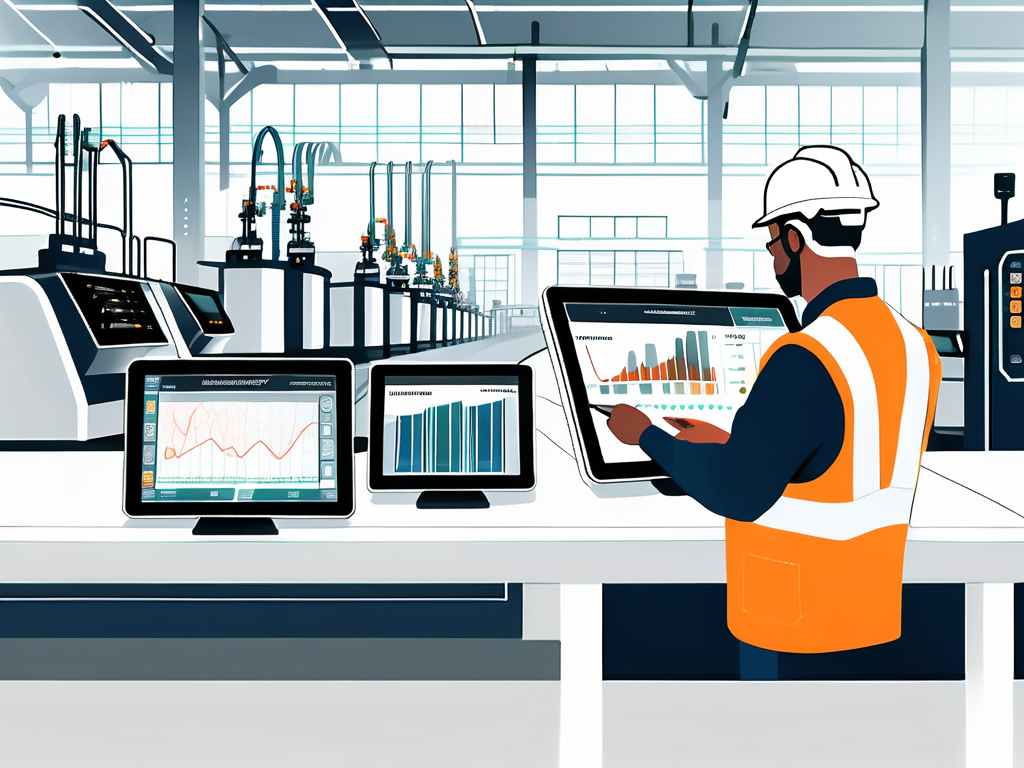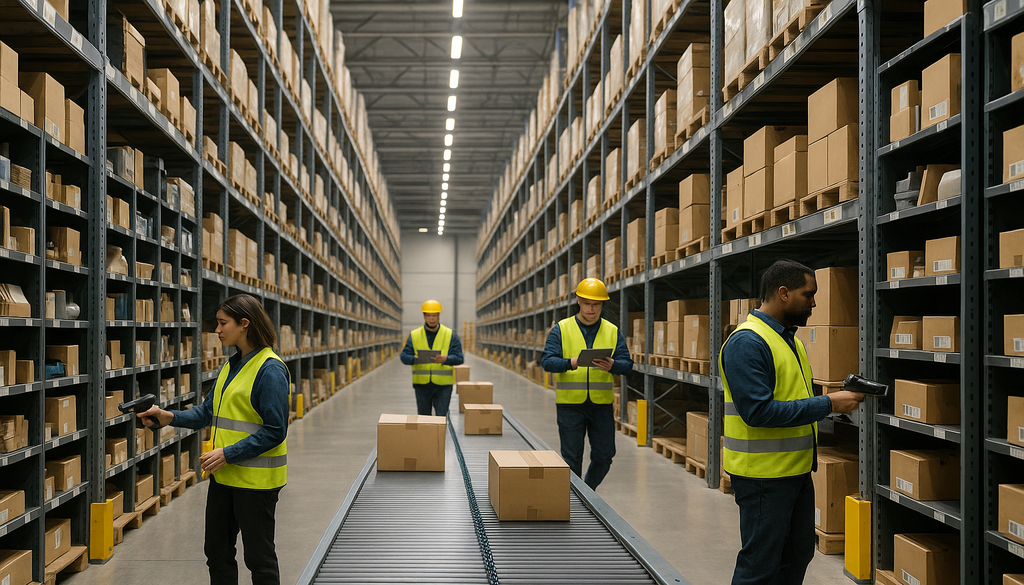Shop floor control plays a crucial role in modern manufacturing, ensuring the smooth and efficient operation of the production process. By effectively managing resources, tracking progress, and optimizing workflow, shop floor control helps manufacturers achieve higher productivity, reduce waste, and enhance overall product quality.
Understanding Shop Floor Control
Before delving into the specifics, it’s important to understand what shop floor control exactly entails and why it is so important. Shop floor control refers to the set of managerial activities and systems that oversee and coordinate the production process on the shop floor.

Shop floor control is a critical aspect of manufacturing operations, playing a pivotal role in ensuring the smooth and efficient functioning of a production facility. By overseeing and coordinating various activities on the shop floor, shop floor control helps in optimizing production processes, reducing waste, and enhancing overall productivity.
Definition and Importance of Shop Floor Control
Shop floor control involves monitoring and controlling all aspects of production, from scheduling and resource allocation to material handling and quality assurance. Its primary goal is to ensure that production runs smoothly and efficiently, minimizing downtime, reducing errors, and meeting customer demands in a timely manner.
Furthermore, shop floor control is essential for maintaining a competitive edge in the market by enabling manufacturers to respond quickly to changing demands and market conditions. By implementing effective shop floor control practices, companies can improve their operational efficiency, reduce costs, and enhance customer satisfaction.
Key Components of Shop Floor Control
Effective shop floor control relies on several key components, including:
- Real-time monitoring and tracking of production activities
- Accurate forecasting and scheduling
- Efficient resource allocation and utilization
- Effective communication between all stakeholders
- Continuous quality control and improvement
These components work together to ensure that production processes are streamlined, resources are utilized optimally, and quality standards are consistently met. Real-time monitoring allows for quick decision-making, while effective communication fosters collaboration and alignment among different departments. Continuous quality control and improvement efforts help in identifying areas for enhancement and implementing corrective measures to drive operational excellence.
The Evolution of Shop Floor Control in Manufacturing
Over the years, shop floor control methods have evolved, adapting to changing manufacturing practices and technological advancements. The need for efficient production management has driven the transformation of how manufacturing processes are monitored and controlled.

With the rise of Industry 4.0, smart factories are becoming more prevalent, leading to a new era of interconnected manufacturing systems that rely on data-driven insights for optimization.
Traditional Shop Floor Control Methods
In the past, shop floor control relied heavily on manual processes and paper-based systems. Production activities were tracked using physical documents and spreadsheets, making it challenging to monitor real-time progress and ensure efficient coordination. This traditional approach often resulted in delays, errors, and a lack of visibility into key performance indicators.
As manufacturing operations grew in complexity and scale, the limitations of traditional shop floor control methods became more apparent. The need for a more agile and responsive system paved the way for technological advancements in production management.
Modern Innovations in Shop Floor Control
Today, manufacturers can leverage advanced software solutions specifically designed for shop floor control. These systems automate and streamline various aspects of production management, providing real-time visibility into operations and enabling data-driven decision-making. By harnessing the power of artificial intelligence and machine learning, modern shop floor control solutions can predict maintenance needs, optimize production schedules, and identify opportunities for process improvement.
Modern shop floor control solutions integrate with other systems, such as enterprise resource planning (ERP) and manufacturing execution systems (MES), creating a seamless flow of information across the organization. This interconnected ecosystem enables manufacturers to achieve greater efficiency, quality, and flexibility in their production processes.
The Impact of Shop Floor Control on Manufacturing Efficiency
Implementing effective shop floor control systems can have a significant impact on manufacturing efficiency, benefiting both the company and its customers.
Shop floor control plays a crucial role in the manufacturing industry by providing real-time insights and control over the production process. This level of visibility allows managers to make informed decisions quickly, leading to improved operational efficiency and cost savings.
Improving Workflow and Productivity
Shop floor control enables manufacturers to optimize workflow by identifying bottlenecks and inefficiencies. Real-time monitoring and data analysis allow for timely adjustments and resource reallocation, ensuring that production stays on track and that resources are used efficiently.
Moreover, shop floor control systems facilitate effective scheduling and sequencing of production tasks. By balancing workloads, streamlining setups, and minimizing changeovers, manufacturers can increase overall productivity and reduce lead times.
Another key benefit of shop floor control is its ability to enhance communication and collaboration among different departments within a manufacturing facility. By providing a centralized platform for sharing information and coordinating activities, shop floor control systems promote teamwork and synergy, leading to smoother operations and faster problem resolution.
Reducing Waste and Enhancing Quality
Efficient shop floor control helps minimize waste and prevent defects. By closely monitoring each step of the production process, manufacturers can identify and address issues in real time, reducing the likelihood of errors and rework.
Furthermore, shop floor control systems enable continuous quality control and improvement. By collecting and analyzing data on key performance indicators (KPIs) and quality metrics, manufacturers can fine-tune their processes, implement corrective actions, and enhance overall product quality.
By leveraging shop floor control systems, manufacturers can not only improve their operational efficiency and product quality but also gain a competitive edge in the market. The ability to adapt quickly to changing market demands and production requirements is essential in today’s fast-paced manufacturing environment, and shop floor control is a key enabler of agility and responsiveness.
Shop Floor Control and the Integration of Technology
As technology continues to advance, shop floor control is becoming increasingly intertwined with automation and digitalization.
In addition to automation and digitalization, another key aspect that is revolutionizing shop floor control is the concept of interconnected systems. By connecting various machines, devices, and software, manufacturers can create a seamless flow of information and operations on the shop floor.
Role of Automation in Shop Floor Control
Automation plays a vital role in shop floor control, enabling manufacturers to streamline operations and achieve higher levels of efficiency and accuracy.
Automated systems for data collection, such as barcode scanners and RFID technology, eliminate manual data entry and ensure real-time, accurate information on production activities. This allows for better decision-making and faster response times to any issues that may arise.
Moreover, automation extends beyond data collection to include robotic process automation (RPA) and autonomous machines. These technologies can perform repetitive tasks with precision and consistency, freeing up human workers to focus on more complex and strategic activities.
The Future of Shop Floor Control: AI and IoT
The future of shop floor control lies in harnessing the power of artificial intelligence (AI) and the Internet of Things (IoT). AI algorithms can analyze vast amounts of data in real time, detecting patterns and anomalies that humans may overlook.
Furthermore, the integration of AI with machine learning algorithms enables predictive maintenance, where machines can anticipate maintenance needs based on usage patterns and performance data. This proactive approach helps prevent unexpected breakdowns and costly downtime.
IoT devices, such as sensors and smart machines, can provide valuable data on production performance and machine health. This data can be used to optimize operations, predict maintenance needs, and prevent downtime.
By combining AI capabilities with IoT connectivity, manufacturers can create a truly intelligent shop floor that continuously learns, adapts, and optimizes processes for maximum efficiency and productivity.
Challenges and Solutions in Implementing Shop Floor Control
Implementing shop floor control systems is not without its challenges. However, with careful planning and the right strategies, these obstacles can be overcome.

One common challenge is resistance to change from employees who may be accustomed to traditional methods. To address this, organizations should provide adequate training and education, highlighting the benefits of the new system for both employees and the company as a whole. By emphasizing how the shop floor control system can streamline processes, reduce errors, and improve overall efficiency, employees will be more likely to embrace the change.
Another challenge is the integration of shop floor control systems with existing technology infrastructure. Close collaboration between IT teams and vendors can help ensure seamless integration and avoid any disruptions in production. This collaboration involves assessing the compatibility of the new system with the current infrastructure, identifying any potential conflicts, and developing a comprehensive plan for implementation. By involving IT teams and vendors early in the process, organizations can proactively address any technical challenges that may arise.
Furthermore, organizations must consider the scalability of the shop floor control system. As businesses grow and evolve, the system should be able to accommodate increased production volumes, additional product lines, and changing manufacturing processes. By selecting a flexible and scalable solution, organizations can future-proof their shop floor control systems and avoid costly replacements or upgrades down the line.
Strategies for Successful Shop Floor Control Integration
Successful integration of shop floor control systems requires careful planning, collaboration, and continuous improvement. Here are some strategies to consider:
- Clearly define goals and objectives for the shop floor control implementation. By setting clear expectations, organizations can align their efforts and measure the success of the system.
- Involve key stakeholders from different departments to ensure alignment. By including representatives from production, quality control, and management, organizations can gather diverse perspectives and ensure that the system meets the needs of all stakeholders.
- Provide comprehensive training to employees on how to use the new system. Training should not only focus on the technical aspects of the system but also emphasize the benefits and value it brings to employees’ daily work. This will help alleviate any concerns or resistance to change.
- Monitor and evaluate the system’s performance regularly to identify areas for improvement. By analyzing data and feedback from employees, organizations can identify bottlenecks, inefficiencies, or areas where the system can be further optimized.
- Encourage feedback from employees and continuously communicate the benefits of the system. By creating an open and transparent communication channel, organizations can foster a culture of continuous improvement and ensure that employees feel heard and valued.
In conclusion, shop floor control is a critical component of modern manufacturing. By implementing effective shop floor control systems and leveraging advanced technologies, manufacturers can optimize workflow, improve productivity, reduce waste, and enhance overall product quality. Overcoming challenges in implementation requires a thoughtful approach that involves addressing resistance to change, ensuring seamless integration with existing technology infrastructure, and considering the scalability of the system. With the right strategies in place, organizations can successfully implement shop floor control systems and unlock the full potential of their manufacturing operations.




